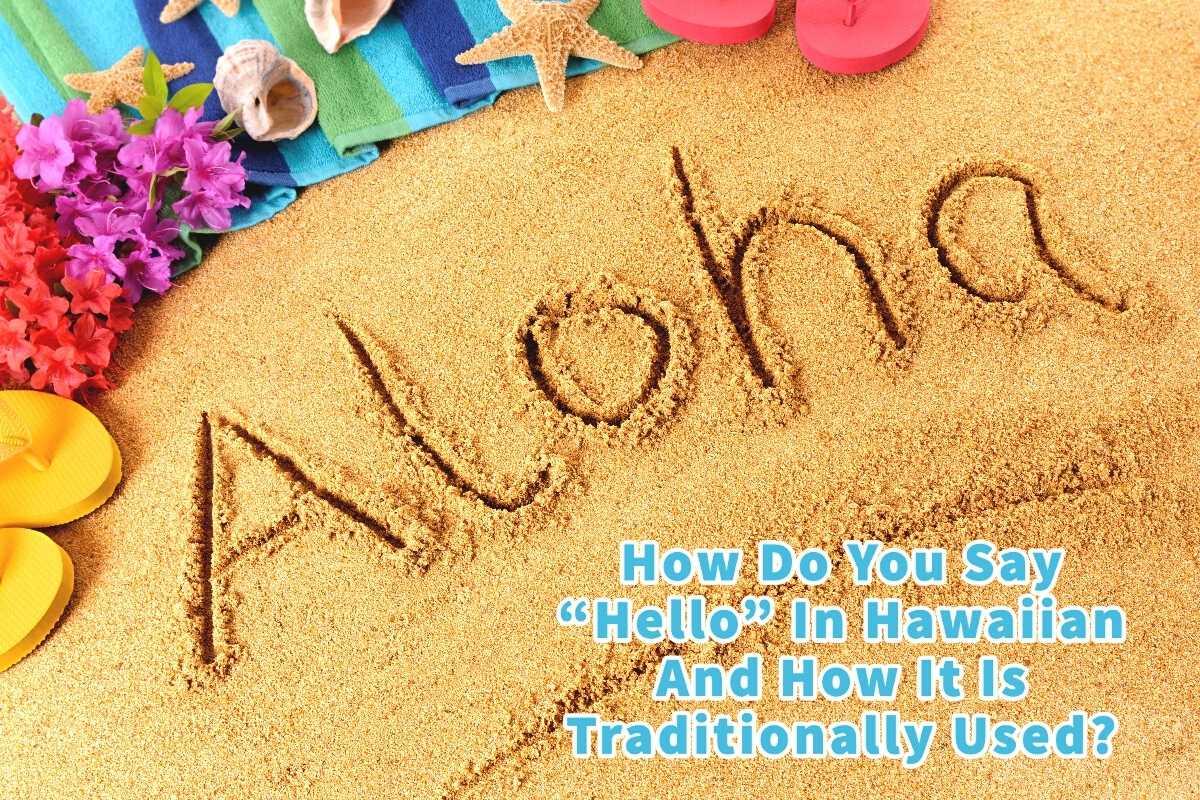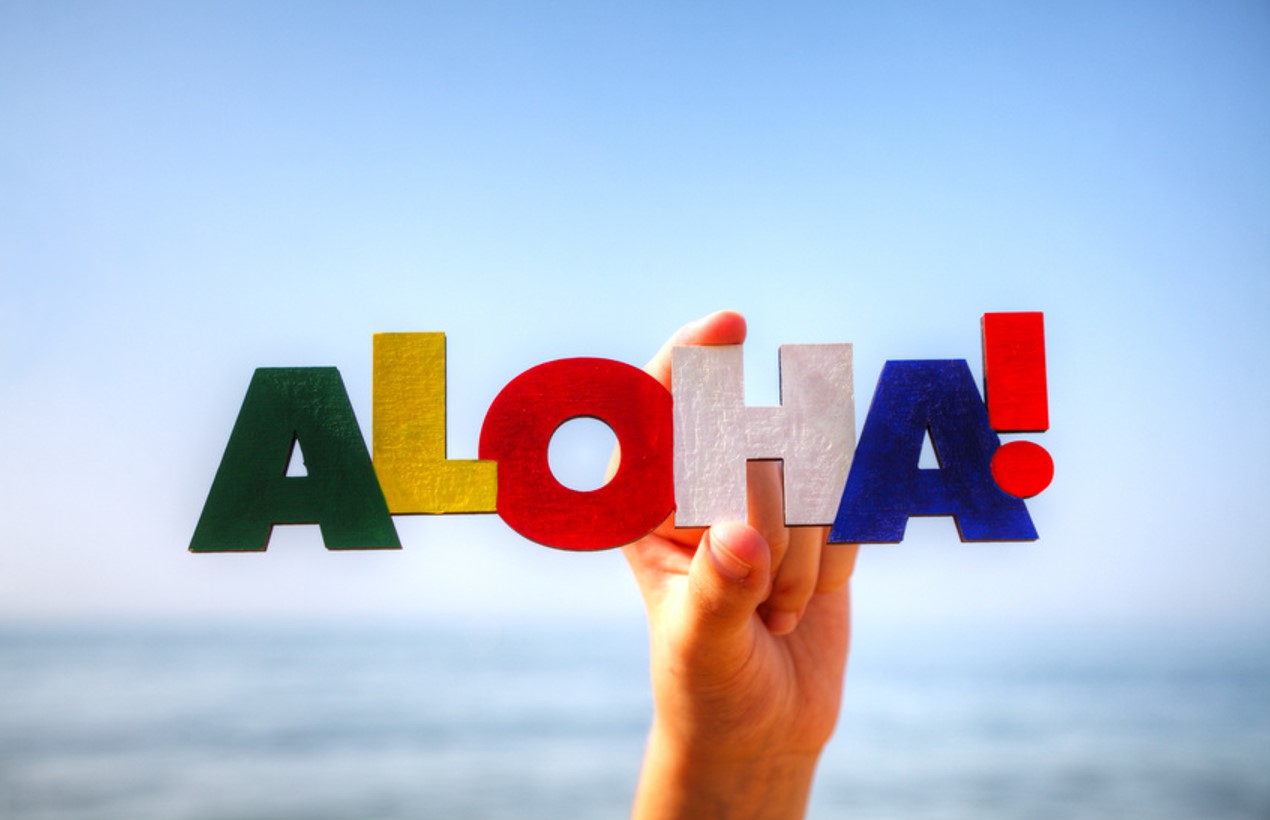Hello in hawaiian language – As “Aloha” takes center stage, this comprehensive guide beckons readers into a world crafted with meticulous care and profound understanding. Delve into the depths of the Hawaiian language, unlocking the secrets of its distinct alphabet, pronunciation, and the cultural significance of its most renowned greeting.
Unveiling the intricacies of “Aloha,” we embark on a journey that explores its diverse usage, ranging from casual encounters to formal settings. Discover the nuances that distinguish its various forms, reflecting the deep respect and warmth embedded within Hawaiian culture.
Hawaiian Language

The Hawaiian language, known as ʻŌlelo Hawaiʻi, is an Austronesian language spoken by the indigenous people of Hawaii. It is a rich and expressive language with a unique alphabet and pronunciation system.
Hawaiian Alphabet, Hello in hawaiian language
The Hawaiian alphabet consists of 12 letters: 5 vowels (a, e, i, o, u) and 7 consonants (h, k, l, m, n, p, w). The letters c, f, g, j, q, s, t, v, x, y, and z are not used in the Hawaiian alphabet.
Pronunciation
Hawaiian pronunciation is characterized by the use of glottal stops, which are brief pauses in the airflow. Glottal stops are represented by an apostrophe (‘) in written Hawaiian. They occur at the beginning of words, between vowels, and at the end of words.
For example, the word “aloha” is pronounced with a glottal stop between the “a” and “l” sounds.
Common Hawaiian Words and Phrases
Here are some common Hawaiian words and phrases:
- Aloha – hello, goodbye, love
- Mahalo – thank you
- ʻAʻole pilikia – no problem
- E komo mai – welcome
- Pehea ʻoe? – how are you?
“Hello” in Hawaiian
The Hawaiian language, also known as ʻŌlelo Hawaiʻi, is the native language of the Hawaiian people and one of the official languages of the state of Hawaii. Like many other languages, Hawaiian has a unique word for “hello” that reflects the culture and traditions of the Hawaiian people.The
Hawaiian word for “hello” is “aloha.” Aloha is a versatile word that can be used in a variety of contexts, depending on the relationship between the speakers and the formality of the situation. In general, aloha is used as a greeting when meeting someone for the first time, but it can also be used to say goodbye, express love or affection, or wish someone well.
Different Ways to Say “Hello” in Hawaiian
There are several different ways to say “hello” in Hawaiian, depending on the context and relationship between the speakers. Some of the most common ways to say “hello” in Hawaiian include:
- Aloha kakahiaka: Good morning
- Aloha awakea: Good afternoon
- Aloha auinala: Good evening
- Aloha kakahiaka nui: Very good morning
- Aloha kakahiaka nui loa: A very, very good morning
When greeting someone for the first time, it is customary to say “aloha kakahiaka,” “aloha awakea,” or “aloha auinala,” depending on the time of day. If you are greeting someone you know well, you may simply say “aloha.”
Hawaiian Language Preservation

Efforts to preserve and revitalize the Hawaiian language have been ongoing for several decades, with the goal of ensuring its survival and continued use in the Hawaiian community. These efforts have included the establishment of Hawaiian language immersion schools, the development of language learning programs, and the creation of resources to support Hawaiian language speakers.
Hawaiian language immersion schools play a crucial role in promoting the language by providing students with the opportunity to learn and use Hawaiian as their primary language of instruction. These schools have been successful in increasing the number of fluent Hawaiian language speakers and have helped to create a new generation of Hawaiian language users.
Other Programs
In addition to immersion schools, other programs have also been instrumental in promoting the Hawaiian language. These include language learning programs offered by community colleges and universities, as well as online and distance learning programs. These programs provide flexible and accessible options for individuals who wish to learn or improve their Hawaiian language skills.
Successful Initiatives
One successful initiative that has helped to increase the number of Hawaiian language speakers is the Hawaiian Language Immersion Program (HLIP). HLIP is a statewide program that provides funding for Hawaiian language immersion schools and other language learning programs. The program has been successful in increasing the number of fluent Hawaiian language speakers and has helped to create a new generation of Hawaiian language users.
Hawaiian Language and Culture

The Hawaiian language is inextricably intertwined with Hawaiian culture, serving as a vibrant tapestry that reflects the values, beliefs, and traditions of the Hawaiian people. Through its rich vocabulary, expressive grammar, and poetic nuances, the Hawaiian language embodies the unique worldview and cultural heritage of Hawaii.
Proverbs and Chants
Hawaiian proverbs, known as ‘olelo no’eau, are concise expressions of wisdom that encapsulate the collective knowledge and experiences of the Hawaiian people. These proverbs often convey moral lessons, cultural values, and practical advice. For instance, the proverb “E ho’i i ka ‘āina, e ho’omau i ke ola” (Return to the land, and life will continue) emphasizes the importance of connecting with one’s ancestral land and living in harmony with nature.
Hawaiian chants, called mele, hold a sacred place in Hawaiian culture. These rhythmic compositions range from traditional chants that recount historical events and genealogies to contemporary songs that express personal experiences and emotions. Mele are often performed at cultural gatherings, hula performances, and other significant occasions.
Cultural Values
The Hawaiian language reflects the core values of the Hawaiian people, including respect for nature, family, and community. The word “aloha,” for example, encompasses a wide range of meanings, including love, compassion, empathy, and hospitality. This concept of aloha permeates all aspects of Hawaiian culture, shaping relationships and interactions.
Another important value reflected in the Hawaiian language is the concept of “mālama,” which means to care for, protect, and preserve. This value extends not only to the environment but also to cultural traditions, language, and the well-being of the community as a whole.
Concluding Remarks: Hello In Hawaiian Language
In closing, our exploration of “Aloha” has illuminated its profound significance, not only as a mere greeting but as a testament to the enduring spirit of the Hawaiian people. Its preservation and revitalization efforts stand as beacons of hope, ensuring that the legacy of this vibrant language continues to flourish for generations to come.
Essential FAQs
What is the correct pronunciation of “Aloha”?
Aloha is pronounced as “ah-loh-ha,” with the emphasis on the second syllable.
When is it appropriate to use “Aloha”?
Aloha can be used in a variety of contexts, from casual greetings to formal introductions. It is generally considered to be a respectful and welcoming term.
Are there different ways to say “Aloha”?
Yes, there are several different ways to say “Aloha” in Hawaiian, depending on the context and relationship between the speakers.